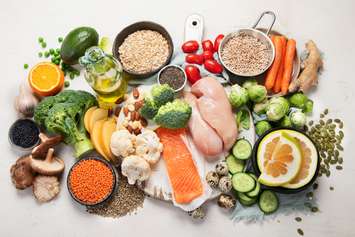As food prices continue to climb in Canada, a new national survey reveals a sharp rise in grocery bill anxiety, but also growing confidence in independent grocers and a surge in support for locally produced food.
The Spring 2025 edition of the Canadian Food Sentiment Index, released this week by Dalhousie University’s Agri-Food Analytics Lab, surveyed nearly 3,000 Canadians in March and found that more than 28 per cent of respondents now expect double-digit food inflation in the near future, a jump of nearly 10 points from the previous fall.
"Canadians are clearly worried about inflation," said Dr. Sylvain Charlebois, Director of the Agri-Food Analytics Lab. "But they’re also adapting, making smarter choices, turning to trusted sources, and supporting local producers more than ever before."
Charlebois told CKNXNewsToday.ca that one of the most surprising takeaways from the report was a sharp increase in trust toward the food supply chain, especially for smaller, community-based retailers. "The biggest winners are independent grocers," he said. "That has a lot to do with the local-first movement we’re seeing right now across the country. People are trying to support independent, locally-owned, Canadian-owned businesses as much as possible."
The report shows that trust in food institutions is generally on the rise, with the largest gain in confidence attributed to independents. More than 43.5 per cent of respondents now say they "always" or "often" buy local foods, a 10-point increase in just six months. Gen Z shoppers are leading that charge, with over half indicating they regularly purchase local.
Yet even as support for local food grows, Canadians are buying less overall. The survey notes a decrease in food consumption per capita compared to a year ago, even as spending at restaurants has seen a modest uptick. Charlebois suggests this doesn't necessarily mean people are eating less, but that they're finding ways to stretch their dollars further by bulk buying and cutting down on waste.
"You can tell that people are just trying to waste less," he explained. "They’re looking at best-before dates differently. They’re using the sniff test, the taste test, to see whether it’s worth throwing something out. People are taking a few more risks to save a dollar or two at home."
Affordability remains the top factor influencing food purchases, but the report shows nutrition and taste are beginning to gain ground. Charlebois said this is typically what happens when inflation cools.
"It’s still the number one issue, but it’s not as bad as it was six months ago or even a year ago," he said. "That’s why we’re expecting other factors to become more important in people’s minds, including nutrition and quality, as well as where their food is coming from."
The report also reflects a shifting attitude toward international food sources. While Canadian-grown products are gaining favour, a "non-American" sentiment appears to be growing even faster. According to Charlebois, many consumers are actively choosing imports from places like Italy, Peru, and South Africa over U.S. products, even if those choices come at a higher cost.
The Canadian Food Sentiment Index is published twice a year and aims to inform policymakers, industry leaders, and the public about trends in food affordability, behavior, and trust. The full Spring 2025 report is available here.






